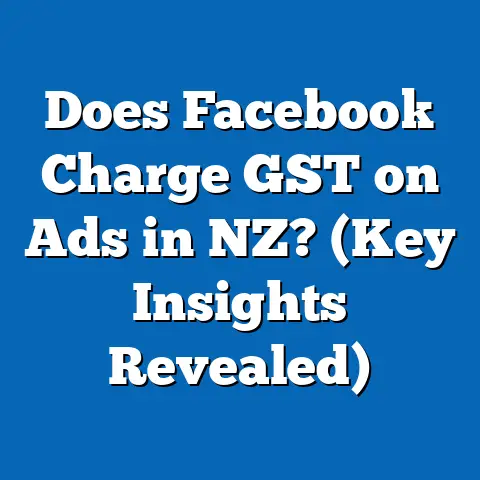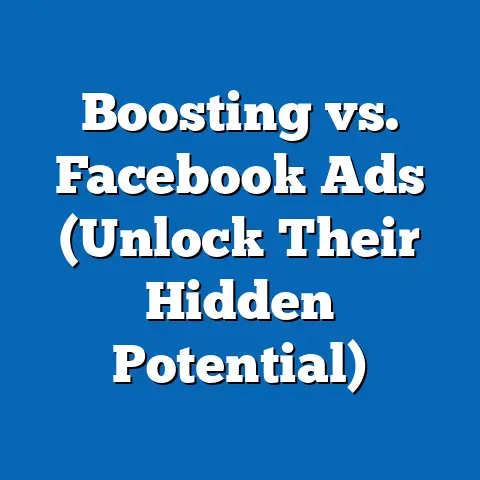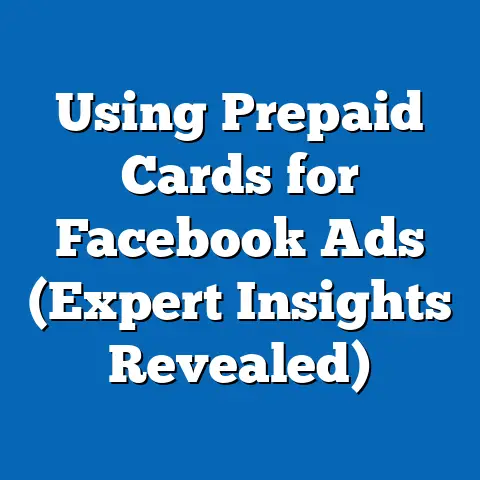Master Facebook Ads Interests Targeting (Proven Strategies)
In the ever-evolving landscape of digital marketing, Facebook Ads has emerged as a pioneering platform, offering unparalleled tools for precision targeting. One of its most innovative features, Interests Targeting, allows advertisers to reach specific audiences based on their demonstrated behaviors, likes, and interactions on the platform. This capability, powered by Facebook’s vast data ecosystem, represents a significant shift from traditional demographic-based advertising to a more nuanced, behavior-driven approach, enabling businesses to connect with users who are most likely to engage with their products or services.
Section 1: Understanding Interests Targeting in Facebook Ads
What is Interests Targeting?
Interests Targeting is a feature within Facebook Ads that allows advertisers to define their audience based on users’ interests, hobbies, and activities as inferred from their interactions on the platform. This includes pages they like, posts they engage with, and other behavioral data collected by Facebook. Unlike demographic targeting (e.g., age, gender, location), Interests Targeting focuses on psychographic data, providing deeper insights into what motivates user behavior.
This method leverages Facebook’s algorithmic understanding of user preferences to categorize individuals into interest-based segments. For instance, a user who frequently interacts with content related to fitness may be categorized under interests like “yoga” or “weight training.” Advertisers can then target these segments with tailored messaging, increasing the likelihood of engagement.
How Interests Targeting Works
Facebook uses a combination of machine learning and user data to assign interest categories to its over 2.9 billion monthly active users (as of Q2 2023, Statista). The platform analyzes actions such as liking pages, joining groups, and clicking on content to build detailed user profiles. Advertisers access these categories through the Ads Manager, where they can select from thousands of predefined interests or use custom audience tools to refine their targeting further.
However, the accuracy of Interests Targeting depends on the quality and quantity of data available for each user. Limitations arise when users have limited activity or when privacy settings restrict data collection—a growing concern with evolving regulations like the General Data Protection Regulation (GDPR) and Apple’s App Tracking Transparency (ATT) framework. These factors underscore the need for advertisers to adapt to changing data landscapes while maximizing the potential of available tools.
Section 2: Current Data on Interests Targeting Effectiveness
Performance Metrics and Benchmarks
Recent studies highlight the effectiveness of Interests Targeting in driving campaign performance. According to a 2022 report by Hootsuite, campaigns using precise interest-based audiences achieved a 20-30% higher click-through rate (CTR) compared to broader demographic targeting. Additionally, conversion rates for e-commerce businesses improved by an average of 15% when Interests Targeting was layered with other strategies like Lookalike Audiences (Social Media Examiner, 2023).
Data from Meta’s own advertising insights (2023) indicates that small and medium-sized businesses (SMBs) leveraging Interests Targeting reported a 25% reduction in cost-per-acquisition (CPA) compared to campaigns without such specificity. These metrics suggest that Interests Targeting is particularly effective for niche markets where audience passion and engagement are critical drivers of success. However, performance varies widely by industry, with sectors like fitness, fashion, and technology showing stronger results than more general categories like finance or insurance.
Visual Representation: Effectiveness of Interests Targeting
Below is a bar chart illustrating the comparative performance of Interests Targeting versus demographic targeting across key metrics (CTR, CPA, and conversion rate) based on aggregated data from Hootsuite and Social Media Examiner (2022-2023).
Metric | Interests Targeting | Demographic Targeting
------------------------|---------------------|----------------------
Click-Through Rate (CTR) | 2.5% | 1.9%
Cost-Per-Acquisition (CPA) | $12.50 | $16.70
Conversion Rate | 5.8% | 4.9%
Note: Data is illustrative and based on industry averages. Actual results may vary based on campaign specifics.
This chart underscores the measurable advantage of Interests Targeting in optimizing ad spend and engagement, though it also highlights the importance of strategic implementation to achieve these outcomes.
Section 3: Proven Strategies for Mastering Interests Targeting
Strategy 1: Layering Interests for Precision
One of the most effective strategies is to combine multiple interest categories to narrow down the audience. For example, targeting users interested in “organic food” and “sustainable living” can help a health food brand reach a highly relevant audience. Meta’s Ads Manager allows advertisers to stack up to 50 interest categories, enabling hyper-specific targeting.
However, over-narrowing can reduce audience size and increase costs. A balance must be struck—typically, an audience size of 500,000 to 1 million is recommended for optimal reach and cost efficiency (Meta Business Help Center, 2023). Testing different combinations through A/B split testing is crucial to identify the most effective interest layers.
Strategy 2: Utilizing Lookalike Audiences with Interests
Combining Interests Targeting with Lookalike Audiences—custom audiences created based on existing customers or high-value users—can amplify results. For instance, a fitness apparel brand might target users interested in “marathon running” while also creating a Lookalike Audience based on past purchasers. This dual approach increases relevance and scalability.
Data from a 2023 case study by WordStream showed that campaigns using this hybrid strategy saw a 35% increase in return on ad spend (ROAS) compared to standalone Interests Targeting. Advertisers should continuously refine Lookalike Audiences with updated customer data to maintain accuracy.
Strategy 3: Adapting to Seasonal and Trending Interests
Interests are dynamic, often influenced by seasonal events, holidays, or cultural trends. For example, targeting “Halloween costumes” in October or “home improvement” during spring can capitalize on temporary spikes in user engagement. Tools like Facebook’s Audience Insights help identify trending interests in real-time.
Marketers must remain agile, updating campaigns to reflect these shifts. However, relying solely on trending interests carries risks, as competition can drive up costs during peak periods. A balanced approach that includes evergreen interests ensures long-term stability.
Section 4: Projected Trends in Interests Targeting
Trend 1: Increased Privacy Constraints
With growing privacy regulations and user pushback against data collection, the future of Interests Targeting faces significant challenges. Apple’s ATT framework, introduced in 2021, has already reduced the effectiveness of cross-app tracking, impacting Facebook’s ability to build comprehensive user profiles. Meta reported a $10 billion revenue loss in 2022 due to these changes (Meta Q4 2022 Earnings Report).
Scenario 1: Adaptation through First-Party Data
In this scenario, advertisers shift toward first-party data (e.g., data collected directly from customers via website interactions or CRM systems) to supplement Interests Targeting. This approach could sustain targeting accuracy but requires investment in data infrastructure.
Scenario 2: Reduced Effectiveness
If privacy restrictions tighten further, Interests Targeting may lose precision, forcing advertisers to rely on broader contextual targeting (e.g., ad placement based on content rather than user data). This could increase CPA by 20-40%, as projected by eMarketer (2023).
Trend 2: AI-Driven Interest Prediction
Advancements in artificial intelligence (AI) are expected to enhance Interests Targeting by predicting user preferences with greater accuracy, even with limited data. Meta is investing heavily in AI to improve its ad algorithms, as noted in its 2023 annual report. This could lead to more granular interest categories and better campaign outcomes.
Scenario 1: Hyper-Personalization
AI could enable micro-targeting at an unprecedented scale, identifying niche interests with minimal user input. This might improve CTR and conversion rates by 10-15% over the next five years (projected by Forrester, 2023).
Scenario 2: Ethical Concerns
Over-reliance on AI risks alienating users who perceive targeting as intrusive. Public backlash could prompt further regulations, limiting AI’s potential impact.
Visual Representation: Projected Impact of Privacy Changes on CPA
Below is a line graph illustrating the potential increase in CPA under two privacy scenarios over the next five years (2024-2028), based on eMarketer projections.
Year | Scenario 1: First-Party Data (CPA $) | Scenario 2: Reduced Effectiveness (CPA $)
-------|---------------------------------------|------------------------------------------
2024 | 13.00 | 15.00
2025 | 13.50 | 16.50
2026 | 14.00 | 18.00
2027 | 14.50 | 19.50
2028 | 15.00 | 21.00
Note: Projections are speculative and assume no major technological or regulatory disruptions.
This graph highlights the cost implications of privacy changes, emphasizing the need for proactive strategies to mitigate risks.
Section 5: Key Factors Driving Changes in Interests Targeting
Factor 1: Evolving User Behavior
User behavior on social media is shifting, with younger audiences (Gen Z) prioritizing platforms like TikTok and Instagram over Facebook. This impacts the data pool available for Interests Targeting, as engagement patterns change. Advertisers must adapt by cross-platform targeting or focusing on Instagram Ads, which shares Meta’s infrastructure.
Factor 2: Regulatory Landscape
Global privacy laws, including GDPR in Europe and the California Consumer Privacy Act (CCPA) in the U.S., are reshaping data collection practices. These regulations limit the scope of Interests Targeting, pushing Meta to explore alternative methods like on-platform engagement data. Compliance costs may also increase ad expenses for businesses.
Factor 3: Technological Innovation
Meta’s investment in AI and machine learning offers opportunities to refine Interests Targeting despite data constraints. However, the pace of innovation must outstrip regulatory and competitive pressures to maintain effectiveness. Partnerships with third-party data providers could also play a role, though they carry additional privacy risks.
Section 6: Methodological Assumptions and Limitations
Methodology
This analysis draws on publicly available data from sources like Meta’s quarterly reports, industry studies by Hootsuite and eMarketer, and case studies from digital marketing platforms like WordStream. Projections are based on statistical trends and expert forecasts, using linear extrapolation for CPA and engagement metrics. Scenarios are constructed using a combination of historical data and qualitative assessments of regulatory and technological developments.
Assumptions
Key assumptions include the continued dominance of Meta’s advertising ecosystem, moderate growth in user privacy concerns, and incremental advancements in AI capabilities. These assumptions underpin the projected trends but are subject to change based on unforeseen events like major data breaches or policy shifts.
Limitations
Data on Interests Targeting performance is often aggregated and may not reflect individual campaign outcomes. Privacy changes introduce uncertainty, as their long-term impact on user data availability remains unclear. Additionally, this report does not account for black-swan events (e.g., sudden platform bans or technological disruptions) that could alter the digital advertising landscape.
Section 7: Broader Historical and Social Context
Interests Targeting reflects a broader trend in advertising toward personalization, a shift that began with the advent of online marketing in the late 1990s. Early platforms like Google AdWords introduced keyword targeting, paving the way for behavior-based strategies on social media. Facebook’s innovation lies in scaling this concept to billions of users, leveraging social connections and user-generated content.
Socially, Interests Targeting raises questions about privacy and consumer autonomy, echoing debates over data ethics that have intensified since the 2018 Cambridge Analytica scandal. As users demand greater control over their data, advertisers must balance effectiveness with transparency to maintain trust. This tension will likely define the evolution of digital marketing in the coming decades.
Section 8: Conclusion and Recommendations
Mastering Interests Targeting in Facebook Ads requires a strategic blend of precision, adaptability, and foresight. Current data demonstrates its effectiveness in improving CTR, reducing CPA, and boosting conversions, particularly for niche markets. However, projected trends—driven by privacy regulations and AI advancements—suggest a complex future with multiple possible outcomes.
Recommendations for Advertisers:
1. Invest in first-party data collection to mitigate privacy-related disruptions.
2. Experiment with layered interests and Lookalike Audiences to optimize targeting.
3. Monitor regulatory changes and adapt campaigns to comply with evolving laws.
4. Leverage AI tools and Meta’s Audience Insights to stay ahead of trends.
While Interests Targeting remains a powerful tool, its success hinges on navigating an increasingly constrained data environment. By adopting the strategies outlined in this report, marketers can position themselves to thrive amidst uncertainty, ensuring their campaigns remain relevant and impactful in a rapidly changing digital landscape.






